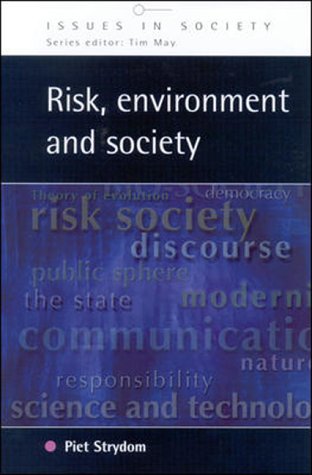

![]()
![]()

Piet Strydom's Risk, Environment and Society draws upon environmental issues to raise fundamental questions about discursive construction of risk in our modern societies. Strydom's timely book has a number of salient virtues; it provides an important account of the major theorical trends in this field, mapping usefully the different concepts, influences, authors and background theories, with excellent clarifications and epistemological positions for each of the main theorists (specially in chapters 2 and 4). Apart from Ulrich Beck, who is considered here as a central figure in this field, other influent scholars who wrote extensively about the theory of risk are Niklas Luhmann, Anthony Giddens, Klaus Eder, Brian Wynne, Helga Nowotny. To understand risk, there seem to be two main theorical frameworks, where most of these authors are ranked into constructivists, while Nowotny would rather be considered by Strydom as a realist thinker (p. 47).
Risk has now become a part into an ongoing debate about danger and security, that was limited to experts and regulators in the 1950's, but now also implies private corporations, state, associations, movements (p. 12). Half a century ago, risk debates only concentrated on nuclear energy, but we now question major issues such as global environmental problems, biotechnology, and of course nuclear power. This is why sociologists are not impostors in this public debate raising issues about expertise, power, knowledge, public discourse and legitimation : "Of particular importance are the illusions of experts, safety officials, corporations and state officials, yet those of voluntary associations, social movements and the public should by no means be excluded." (p. 162).
The book is divided into three parts. Part one concentrates on some current debates within the risk discourse since the 1950's, such as those controversies about risks related to nuclear energy and safety research. Part two gives a more detailled cultural analysis on how risk is socially constructed since half a century and how legitimacy and concensus can be reached. The third part raises strong arguments related to knowledge society, responsibility and the public role of sociology, calling for a new critical theory of risk. Strydom's style and arguments are always clear, fairly straightforward and often inspiring.
For these reasons, Risk, Environment and Society is an inventive and core text within the framework of risk studies, and should be read first by any scholar interrested in that field. If you are a newcomer in that field, this is the book to begin with, because it is clear and extensive. In fact, Piet Strydom's account on risk society draws insightful interdisciplinary connections and highlights some key issues on risk society, sociology of science, media ethics, political science and even environmental education. Among recent books, I can't think of a more useful scholarly achievement in risk studies, making Piet Strydom one of the true leading theorists in his discipline.
Yves Laberge
Institut québécois des hautes études internationales, Québec.